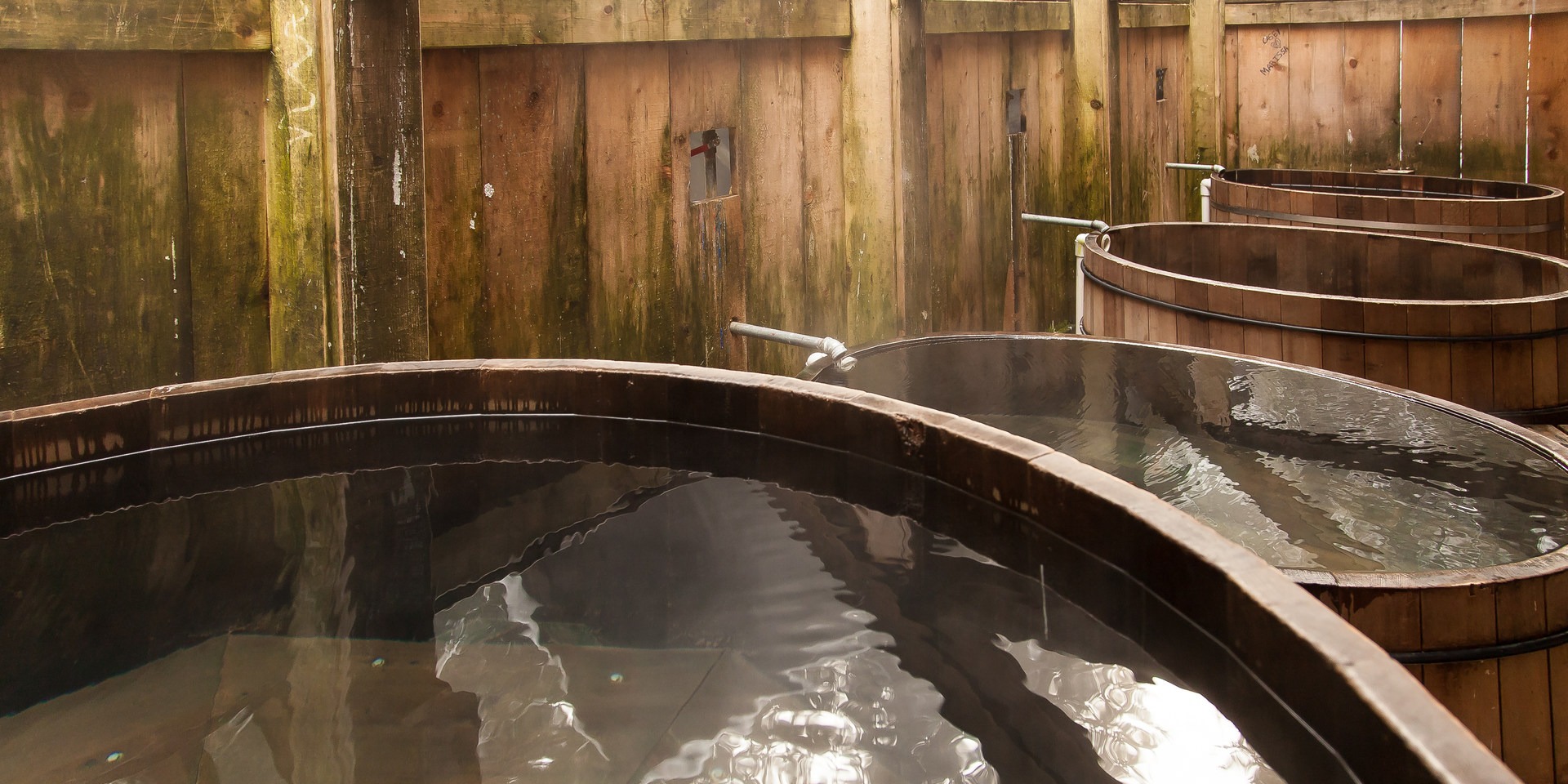Bagby Hot Springs, secluded amongst towering old-growth fir and cedar trees, represents the ideal of a natural hot springs. However, this ideal is challenged by very heavy use and the resulting artifacts. Crowds can be avoided by going early in the morning, on weekdays or during the winter. Fortunately, the variety of pools and bathing rooms offers something for both those interested in privacy and those who prefer a social soak. Bagby Hot Springs is currently managed by a private company under contract with the Forest Service, a net benefit as the heavy use requires some degree of maintenance and security. There is currently a $5 fee per person for soaking, payable at the Ripplebrook Ranger Station, to an attendant at the parking area (when present) or at the self-service pay booth at the trailhead.
The hot springs are fed by three springs that supply water reaching 138-degrees. Users liberally mix in cold surface water to achieve their desired temperature. The bathing facilities consist of three rustic bathhouses, one containing five cedar bathing tubs in private rooms, a second containing four round wooden tubs of varying sizes, and a third containing a single large tub that is located 100 yards from the others. Two primitive toilet facilities are provided. Nudity is common, but technically only allowed in the private bathhouses; likewise, alcohol is a prohibited but common occurrence. Soakers are encouraged to share the larger tubs with others and to limit soaking to one hour when others are waiting.
Discovery of the hot springs is credited to prospector Jim Bagby in 1880. The 1913 forest service cabin that was built for firefighters and communication equipment still stands alongside the newer structures. This facility expanded in the 1920s, but the remnants of this expansion have been reclaimed by the woods. In 1974 the forest service built a new cabin to replace the 1913 structure, which was renovated in 2006, but it remains closed to the public. The 1920s also saw the construction of the first of several bathhouses on the site, the first of which burned down in 1979. The current bathing facilities, including a replacement bathhouse and additional structures, were completed in the early 1980s as a combined effort between the Forest Service and the Friends of Bagby volunteer group.
From the parking area, the short trail to the hot springs is clearly marked. Note that several miles of road access are frequently snow-covered and are not maintained for winter travel. Travel on this road in the winter should only be attempted in appropriately equipped vehicles. In winter the trail can be slippery with packed snow and ice. The hike alone is worth the drive, winding through primordial old-growth woods above the clear water of the Hot Springs Fork of the Collawash River. There are also several swimming holes along the trail.

























Comments
We spoke with a couple of very friendly ladies that were placing warnings on vehicles about the soak fee. They suggested that, if you are only hiking, leave a note on your windshield informing them of that.
Sign In and share them.